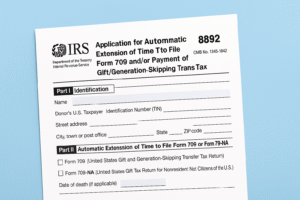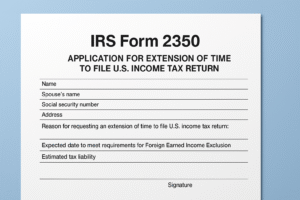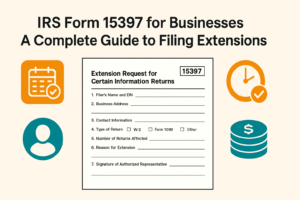In the evolving landscape of global business, corporate tax reform remains a pivotal aspect of fiscal policy with significant implications for companies, economies, and society at large. Governments periodically adjust corporate tax codes to align with economic goals, address fiscal deficits, incentivize investment, or ensure equitable tax treatment. While such reforms are fundamentally aimed at enhancing national economic efficiency and fairness, their ripple effects on the business environment can be profound and multifaceted.
This article delves into the nuances of corporate tax reform, explores the motivations driving these changes, and analyzes the consequent impacts on businesses both large and small. By examining these aspects, corporate leaders and stakeholders can better navigate the complexities of tax policy and strategize effectively for sustainable growth.
Understanding Corporate Tax Reform
Corporate tax reform typically involves amendments to tax rates, the tax base, deductions, credits, and compliance mechanisms. Such reforms can range from broad overhauls like sweeping reductions in the statutory tax rate to targeted adjustments such as closing loopholes, modifying transfer pricing rules, or introducing incentives for specific sectors.
The objectives behind reform vary, Stimulate domestic investment, enhance competitiveness, curb tax evasion, modernize tax administration, or realign taxation with contemporary economic activities, including digital commerce. For example, lowering the corporate tax rate is generally intended to increase after-tax profits, encouraging reinvestment and expansion. Conversely, tightening regulations on deductions may seek to broaden the tax base and increase government revenues.
Motivations Driving Reform
Several key drivers underpin corporate tax reform initiatives:
- Economic Growth and Competitiveness: Nations often reform corporate taxes to attract foreign direct investment and encourage domestic business expansion. A competitive tax regime is vital in an interconnected global economy where capital and talent are mobile.
- Addressing Revenue Needs: Governments must balance public expenditures with sustainable revenue sources. Reforms can aim at reducing tax avoidance and broadening the tax base to ensure fiscal stability.
- Equity and Fairness: Corporate tax reform can address perceived inequities, ensuring that profitable corporations pay their fair share, thereby supporting social programs and infrastructure development.
- Adapting to New Business Models: The rise of digital enterprises, e-commerce, and intangible assets challenges traditional tax frameworks. Reforms strive to modernize laws to capture revenue accurately.
Impact on Businesses
The effects of corporate tax reform on businesses depend on the nature of the changes and the characteristics of the affected enterprises.
- Cash Flow and Investment Decisions: Reduction in tax rates can increase businesses’ net income and free cash flow, enabling higher capital expenditures, research and development, and employment. Conversely, increased tax liabilities might constrain these activities.
- Strategic Tax Planning: Changes to deductions, credits, or international tax rules often necessitate reassessment of tax strategies. Multinational companies especially must evaluate transfer pricing, profit repatriation, and compliance costs.
- Compliance and Administrative Burden: New regulations can impose additional reporting requirements and complexity, affecting operational efficiency particularly for small and medium enterprises lacking extensive tax expertise.
- Market Valuation and Investor Confidence: Tax reform impacts can influence stock valuation as investors adjust expectations of profitability and growth prospects.
- Competitive Dynamics: Companies may face altered competitive landscapes if tax reforms disproportionately benefit certain industries or business models.
Case Studies and Examples
The U.S. Tax Cuts and Jobs Act (TCJA) of 2017 provides an illustrative case. By lowering the corporate tax rate from 35% to 21%, it aimed to stimulate investment and repatriate overseas earnings. The reform led to increased capital spending and stock buybacks by corporations but also raised debates on its long-term fiscal sustainability and income inequality impacts.
Similarly, countries in the European Union have been harmonizing certain corporate tax principles to prevent base erosion and profit shifting, affecting how multinational businesses allocate resources and report earnings.
Strategic Recommendations for Businesses
In light of ongoing and potential reforms, businesses should consider the following strategies:
- Proactive Monitoring: Stay informed of legislative developments domestically and internationally to anticipate changes.
- Tax Risk Assessment: Evaluate exposures under new laws and adapt compliance frameworks accordingly.
- Scenario Planning: Model financial outcomes under various reform scenarios to guide investment and operational decisions.
- Engage with Policymakers: Participate in consultations to represent business interests and contribute to sustainable tax policy design.
- Leverage Technology: Invest in tax technology solutions to manage compliance complexities efficiently.
Conclusion
Corporate tax reform is an ever-present dimension of the business environment, reflecting the dynamic interplay between economic policy and commercial interests. While challenges undoubtedly arise from changes to tax legislation, these reforms also present opportunities for businesses to optimize strategies, invest in innovation, and strengthen competitive positioning. By understanding the motivations and consequences of tax reforms, corporate leaders can better align their objectives with shifting fiscal landscapes, ultimately fostering resilient and growth-oriented enterprises.







